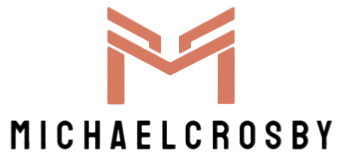The retail landscape has undergone a transformative journey from traditional paper-based pricing systems to the cutting-edge realm of electronic shelf labels ESLs. This shift represents a significant leap forward in the efficiency, accuracy, and flexibility of pricing strategies within the retail sector. Historically, paper shelf labels were a staple in stores, requiring manual updates and posing challenges in terms of time, labor, and the potential for errors. Enter ESLs – digital displays that have revolutionized the way products are priced and information is communicated to customers. ESLs are essentially digital tags that replace conventional paper labels on store shelves. These labels use electronic ink technology, allowing for dynamic and real-time updates to pricing and product information. One of the primary advantages of ESLs is their ability to streamline and automate the pricing process, eliminating the need for manual adjustments. Retailers can now instantly update prices across an entire store or specific sections, ensuring consistency and accuracy.
The rise of ESLs has also ushered in a new era of pricing flexibility for retailers. Dynamic pricing, which involves adjusting prices based on various factors such as demand, time of day, or inventory levels, becomes a reality with ESLs. Retailers can implement dynamic pricing strategies to optimize sales, respond to market changes, and remain competitive. This level of adaptability was inconceivable in the era of paper labels, where changes were labor-intensive and time-consuming. Beyond pricing, ESLs serve as powerful communication tools, enabling retailers to convey detailed product information, promotions, and even interactive content directly to consumers. This enhances the overall shopping experience by providing customers with valuable information at the point of purchase. ESLs can also be leveraged to display real-time inventory levels, reducing instances of out-of-stock items and enhancing inventory management. Moreover, esl label contribute to sustainability efforts by significantly reducing paper waste associated with traditional labeling systems. The environmental impact of producing, printing, and disposing of paper labels is mitigated through the use of reusable electronic displays.
 Retailers adopting ESLs not only benefit from operational efficiency but also align with eco-friendly practices, appealing to environmentally-conscious consumers. As technology continues to advance, ESLs are evolving beyond their initial functionalities. Integration with Internet of Things IoT devices allows for enhanced data analytics, enabling retailers to gather valuable insights into consumer behavior, preferences, and shopping patterns. This data-driven approach empowers retailers to make informed decisions, optimize store layouts, and tailor marketing strategies to better meet customer needs. In conclusion, the transition from paper to pixels in the form of electronic shelf labels marks a pivotal moment in the evolution of retail. ESLs bring efficiency, accuracy, and flexibility to pricing strategies while enhancing the overall shopping experience for consumers. As technology continues to advance, ESLs are likely to play a central role in shaping the future of retail by integrating seamlessly with emerging technologies and providing retailers with valuable insights to stay ahead in a dynamic marketplace.
Retailers adopting ESLs not only benefit from operational efficiency but also align with eco-friendly practices, appealing to environmentally-conscious consumers. As technology continues to advance, ESLs are evolving beyond their initial functionalities. Integration with Internet of Things IoT devices allows for enhanced data analytics, enabling retailers to gather valuable insights into consumer behavior, preferences, and shopping patterns. This data-driven approach empowers retailers to make informed decisions, optimize store layouts, and tailor marketing strategies to better meet customer needs. In conclusion, the transition from paper to pixels in the form of electronic shelf labels marks a pivotal moment in the evolution of retail. ESLs bring efficiency, accuracy, and flexibility to pricing strategies while enhancing the overall shopping experience for consumers. As technology continues to advance, ESLs are likely to play a central role in shaping the future of retail by integrating seamlessly with emerging technologies and providing retailers with valuable insights to stay ahead in a dynamic marketplace.

